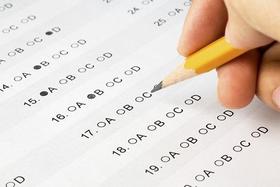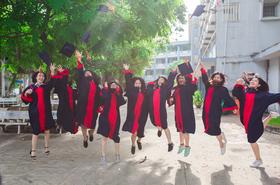- The CBT Technology Institute is a private for-profit college based in Miami, Florida. CBT operates three campus locations throughout Miami Dade County and one corporate office in Cutler Bay, Florida. It is accredited by the Council on Occupational Education.
School Highlights
CBT Technology Institute-Main Campus serves 315 students (100% of students are full-time).
The college's student-teacher ratio of 18:1 is lower than the state community college average of 20:1.
Minority enrollment is 97% of the student body (majority Hispanic), which is more than the state average of 67%.
Quick Facts (2025-26)
- Enrollment: 315 students
- Private-state tuition: $17,440
- Student-teacher ratio: 18:1
- Minority enrollment: 97%
- Source: Integrated Postsecondary Education Data System (IPEDS)
Top Rankings
CBT Technology Institute-Main Campus ranks among the top 20% of public schools in Florida for:
Category
Attribute
School Resources
Completion Rates
School Overview
The teacher population of 18 teachers has stayed relatively flat over five years.
CBT Technology Institute-Main Campus
(FL) Community College Avg.
Carnegie Classification
Associate's Colleges: High Career & Technical-High Traditional
Not applicable, not in Carnegie universe (not accredited or nondegree-granting)
Institution Level
At least 2 but less than 4 years
At least 2 but less than 4 years
Institution Control
Private for-profit
Private, for profit
Year Founded
1988
Colors
Navy Blue, Black, & White
Total Faculty
18 staff
188 staff
School Calendar
Student Body
The student population of CBT Technology Institute-Main Campus has grown by 100% over five years.
The student-teacher ratio of 18:1 has increased from 5:1 over five years.
The CBT Technology Institute-Main Campus diversity score of 0.25 is less than the state average of 0.75. The school's diversity has grown by 117% over five years.
Total Enrollment
315 students
1,236 students
Student-Teacher Ratio
18:1
20:1
# Full-Time Students
315 students
588 students
# Part-Time Students
n/a
648 students
# Enrollment Undergraduate
315 students
282 students
# Full-Time Undergraduate Students
315 students
587 students
# Full-Time Graduate Students
n/a
295 students
# Part-Time Undergraduate Students
n/a
832 students
# Part-Time Graduate Students
n/a
58 students
Total Dormitory Capacity
n/a
174 students
% Asian
1%
5%
% Hispanic
86%
31%
% Black
9%
19%
% White
3%
33%
% Hawaiian
n/a
2%
% Two or more races
n/a
4%
% Non Resident races
n/a
3%
% Unknown races
n/a
3%
Diversity Score
0.25
0.75
College Completion Rate (Students who graduate in less than 4 years)
94%
63%
College Completion Rate (Students who graduate in 4 years or more than 4 years)
n/a
43%
Average Graduate Earnings (10 Years)
$24,300
$31,500
Tuition and Acceptance Rate
The private state tuition of $17,440 is more than the state average of $15,490. The private state tuition has grown by 33% over four years.
Private State Tuition Fees
$17,440
$15,490
Tuition Notes
$498.00 per semester credit
% Students Receiving Some Financial Aid
100%
86%
Median Debt for Graduates
$8,700
$9,750
Median Debt for Dropouts
$4,566
$5,500
Acceptance Rate
n/a
94%
SAT Reading
n/a
442
SAT Math
n/a
429
ACT Composite
n/a
18
ACT English
n/a
18
ACT Math
n/a
18
Source: 2024 (or latest year available) Integrated Postsecondary Education Data System (IPEDS) , School Administrators
School Notes
- School Mascot: College Of Business And Technology C-bot
Frequently Asked Questions
How much does CBT Technology Institute-Main Campus cost?
CBT Technology Institute-Main Campus's private state tuition is approximately $17,440.
What is CBT Technology Institute-Main Campus's ranking?
CBT Technology Institute-Main Campus ranks among the top 20% of community college in Florida for: Percent of students receiving financial aid and Highest completion rates.
Recent Articles

The Rise of Technical and Vocational Training in 2025
Explore the 2025 surge in technical and vocational training—enrollment, policy, costs, and why this path is gaining ground for students and parents.

Stackable Credentials: How Community Colleges Advance Careers
Discover how community colleges use stackable credentials to build career pathways, boost earnings, and enable lifelong learning in 2025.

High-Paying Jobs You Can Get with a Community College Degree
Discover top high-paying careers you can launch in 2025 with a community college (associate) degree and high-growth credentials in tech, healthcare and trades.





